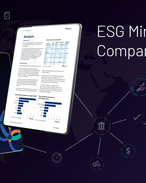This was the conundrum tackled by Pew Center of Global Climate Change president Eileen Claussen at the first COAL21 annual conference in Sydney yesterday.
Claussen thought a carbon-constrained world a certainty, along with coal remaining the primary source for energy production throughout the globe. “How we reconcile these two predictions is, I believe, the crucial question facing this industry in the months and years ahead,” she said.
“We have to get serious. I recognise cost is the biggest driver in business decision-making. But we also have to think about the environment when we make decisions, particularly for substantial capital investments that will last a long time. Because if we make the wrong decisions we will not only be sacrificing the environment, but we will also end up stranding significant amounts of capital,” she said.
“So it is critical we wake up and pay attention both to what the science is telling us and to where the economics of bad decision-making will lead. If we start now, I am convinced we can do this in an intelligent, measured way – a way that promotes investment in new technologies and allows time for capitol stock to turn over, so that we both protect our environment and sustain a growing global economy.”
Claussen said in the US coal was responsible for 33% of carbon dioxide emissions, while the comparable figure in Australia was 58%.
“To the extent the coal industry fails to take seriously its obligation to substantially reduce emissions, then the controls imposed from outside are likely to be both more severe and less business-friendly. This is why the COAL21 National Action Plan is so important.”
Claussen said technology strategy alone was not enough. “We also need broader climate policies that will draw the new technologies into the marketplace – policies that reflect the urgency of this issue and the need for real reductions in emissions.”
“It is essential business be guided by clear price signals and a predictable regulatory path.
“In Australia, in America and throughout the world, businesses continue to receive mixed signals from their governments about whether or not we are serious about addressing this challenge. It is time to erase all the doubts and the uncertainty. It is time to act boldly, government and industry together, to embrace the importance of both technology and public policy in protecting the climate we share.”

























